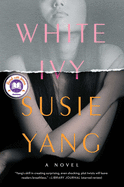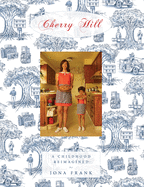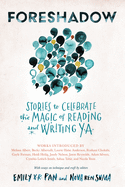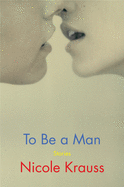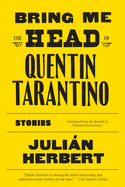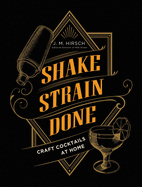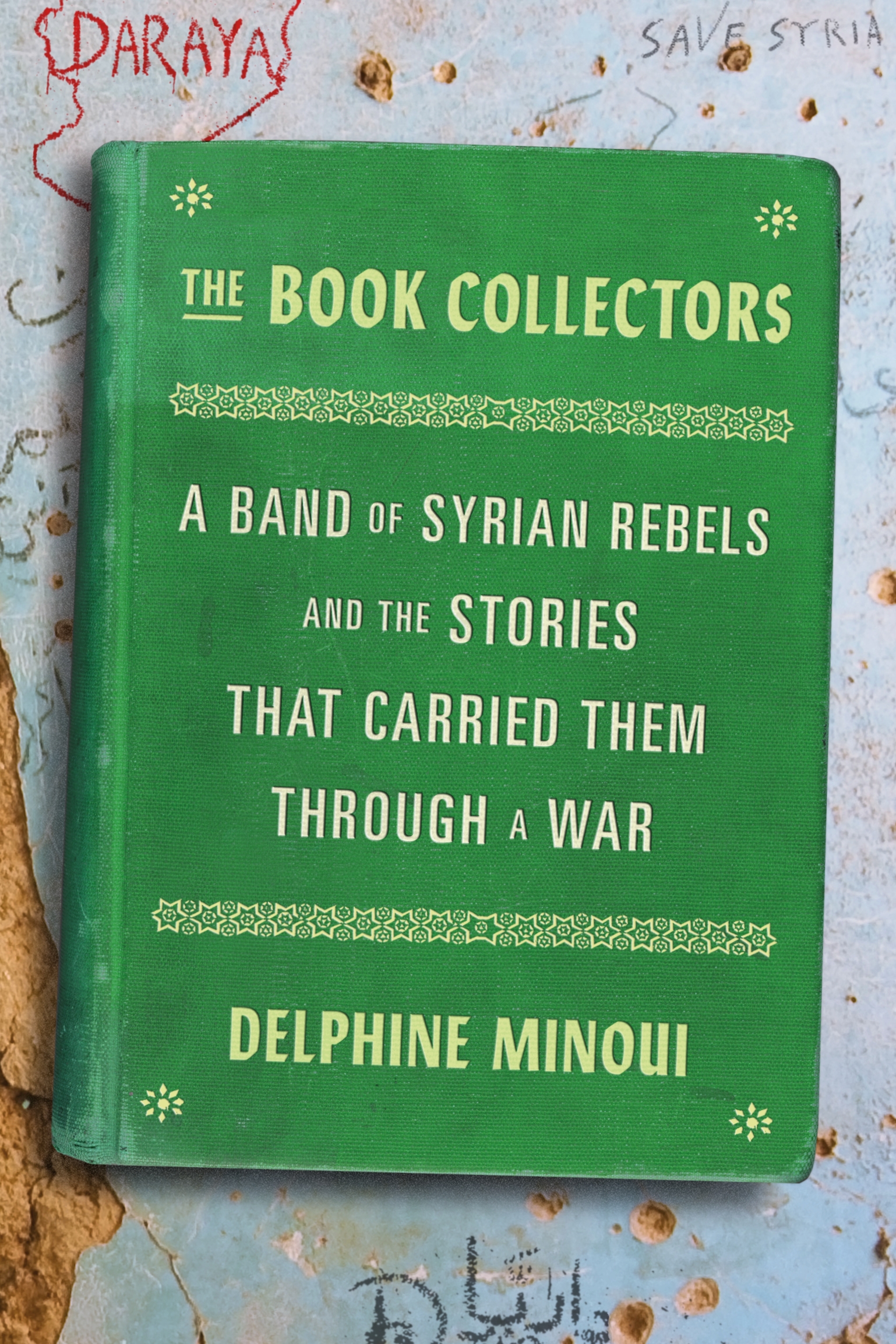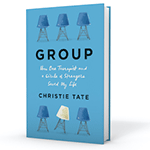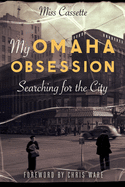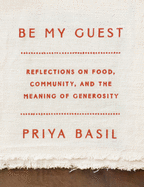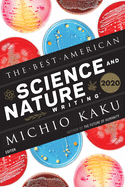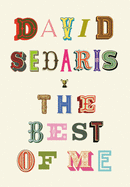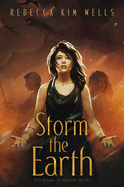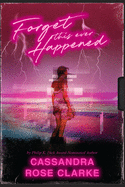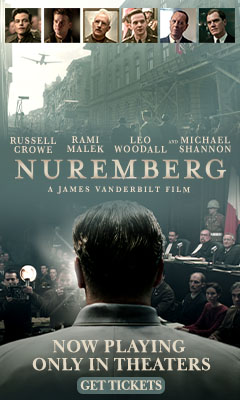Friday, November 6, 2020
Fun format surprises in the board books below--color changes, mix and match, flaps and die-cuts--will likely capture the attention and spark the excitement of pre-readers.
 Mudpuppy's Color Magic Bath Book series includes three waterproof "board" books--Color the Ocean, Cat Donuts and What Color Am I (each $9.99)--that will undoubtedly make bath time entertaining. Each title when dry appears to be filled with white-and-black pages; put the plushy plastic books in the water and vibrant colors appear. A "Chocolate Furosted" cat donut is fun--a Chocolate Furosted cat donut with bright blue stripes on a bold red background is way more fun.
Mudpuppy's Color Magic Bath Book series includes three waterproof "board" books--Color the Ocean, Cat Donuts and What Color Am I (each $9.99)--that will undoubtedly make bath time entertaining. Each title when dry appears to be filled with white-and-black pages; put the plushy plastic books in the water and vibrant colors appear. A "Chocolate Furosted" cat donut is fun--a Chocolate Furosted cat donut with bright blue stripes on a bold red background is way more fun.
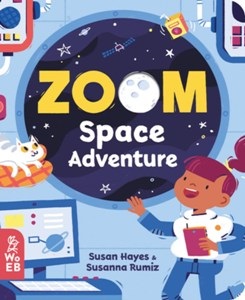 In Zoom Space Adventure by Susan Hayes and illustrated by Susanna Rumiz (What on Earth Books, $14.99), die-cuts are used to blast Ava off to her "big space adventure." Once Ava is in her rocket ship, she waits for the final countdown, which happens over the next five (four, three, two, one!) pages. Lift off! Ava and her little white kitty are off to space, peeping through windows and behind flaps at all the beauty the cosmos has to offer.
In Zoom Space Adventure by Susan Hayes and illustrated by Susanna Rumiz (What on Earth Books, $14.99), die-cuts are used to blast Ava off to her "big space adventure." Once Ava is in her rocket ship, she waits for the final countdown, which happens over the next five (four, three, two, one!) pages. Lift off! Ava and her little white kitty are off to space, peeping through windows and behind flaps at all the beauty the cosmos has to offer.
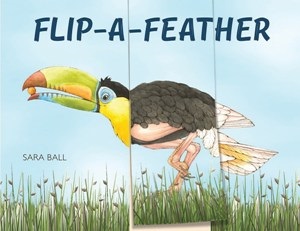 Sara Ball's Flip-a-Feather (Abbeville Kids, $16.95) is a board book for children in the three to five range. Each page introduces a new bird--Pelican, Quetzal, Cockatoo--and is split into three panels that can be individually flipped. As children play with each different section, they have the ability to create hundreds of different kinds of birds: a Pel-quetz-too, for example. With explanatory text on every panel, this oversized board book is silly and educational.
Sara Ball's Flip-a-Feather (Abbeville Kids, $16.95) is a board book for children in the three to five range. Each page introduces a new bird--Pelican, Quetzal, Cockatoo--and is split into three panels that can be individually flipped. As children play with each different section, they have the ability to create hundreds of different kinds of birds: a Pel-quetz-too, for example. With explanatory text on every panel, this oversized board book is silly and educational.
White Ivy
by Susie Yang
Susie Yang's electrifying debut novel, White Ivy, earned its spot on the longlist for the Center for Fiction's 2020 First Novel Prize. Part immigrant story, part elitist takedown, part contemporary novel of wicked manners, White Ivy is an unpredictable spectacle.
At two, Ivy Lin was left with her maternal grandmother in China until she turned five, when her parents finally had the resources to reunite the family "in a wonderful state in America... called Ma-sa-zhu-sai." Reinventing herself as American proves arduous, with abusive parents, a thieving grandmother, a sudden move to New Jersey during high school, no friends. To survive, Ivy learns early the power of manipulation. Her first chance to escape her suffocating family is college in Boston, after which she begins working as an elementary schoolteacher. A chance re-encounter grants her reentry into the Speyer family's seemingly halcyon circle--the (now-former) U.S. senator, his doyenne wife, enviously bohemian daughter Sylvia and, most importantly, perfect son Gideon, who was the idealized object of Ivy's middle-school idolatry.
In just a few months, Ivy might grasp that happily-ever-after she's been relentlessly maneuvering to achieve. But now that she's at the edge of acceptance into society's inner circle, the alluring pull of self-sabotage grows stronger.
Yang's cast might be heavy with unlikable characters--scheming Ivy, pretentious Sylvia, bland Gideon and unrepentantly roué Roux (no spoilers!)--but the story they populate is delectably addictive and frightfully perceptive, as one surprise begets another shocking turn, leading readers far off expected paths. May the deceptions never end. --Terry Hong, Smithsonian BookDragon
Discover: Ivy Lin proves to be the antihero readers will love to hate in debut novelist Susie Yang's assured, deft, biting novel of (manipulative) manners.
To Be a Man: Stories
by Nicole Krauss
Closure is hard to come by for the predominantly Jewish characters in To Be a Man, the unsparing, wistful and finespun first collection of short fiction by the novelist Nicole Krauss (Forest Dark, among others). As one character puts it, "History was what happened to other people while the Jews were waiting for the Messiah to come."
Even divorce and death are unfinished business for Krauss's cast. In "End Days," a teenager who must deliver her parents' judgment of divorce to a rabbi finds the cause of their split frustratingly elusive and her parents' lack of rancor perplexing: "No one was hurt; each had gotten what they wanted. They were in agreement about no longer needing to agree on how to live the rest of their lives." In "The Husband," a social services agent shows up at the Tel Aviv apartment of a 73-year-old widow and presents an old man to her as her husband.
Catastrophes of varying orders of magnitude undergird most of To Be a Man's 10 stories. In "Future Emergencies," a New Yorker living in the post-9/11 city mulls over her new government-issue gas mask, as well as her relationship with her longtime live-in boyfriend. Krauss's stories can read like character studies, proceeding at a deliberate pace that reflects her protagonists' preoccupation with examining one facet of their lives, or maybe someone else's. Characters are both hamstrung and buoyed by what one calls "the absurdity, and also the truth, of the dramas we need to feel fully alive." To Be a Man is a sure-handed collection about, and well suited to, unsure times. --Nell Beram, author and freelance writer
Discover: Novelist Nicole Krauss's unstinting and lovely first collection features 10 character-study-like stories largely populated with Jews who find the past ever present.
Bring Me the Head of Quentin Tarantino: Stories
by Julián Herbert, transl. by Christina MacSweeney
The genre-hopping, award-winning Mexican writer, poet, musician and teacher Julián Herbert (Tomb Song; The House of the Pain of Others) runs rampant with violence in his latest, the electrifying fiction collection Bring Me the Head of Quentin Tarantino.
The impressive assemblage opens and closes with the same sentence: "that thing you call 'human experience' is just a massacre of onion layers." The comparative reasons are graphic, from "nothing tastes so much of blood as a dismembered onion," to additional insistently convincing similarities having to do with spray splatter and fatal crushings. In the first story, "The Ballad of Mother Teresa of Calcutta," the narrator gleefully reveals his "pleasure of depositing a little vomit on those readers who adore straightforward literature." A hack-for-hire, he's just fine with "hijacking the memories and anecdotes of certain clients" when they don't pay, most recently revealing a wayward Pemex executive's nauseating airport encounter with Mother Teresa. In the novella-length, titular last story, another writer--this time, a film critic who insists "the main function of criticism is to misread everything"--is summoned by Jacobo Montaña, "the most wanted man in Mexico," who demands "the head of that f*cking bastard" (yes, Quentin Tarantino) not only for being Montaña's unaware doppelgänger but for stealing what should have been Montaña's own celluloid life.
Reunited with award-winning translator Christina MacSweeney, Herbert presents 10 stories ready to disturb, quite possibly even disgust. That said, even for the most reluctant readers, the surprisingly immersive humor and slyly playful wit make resistance futile. --Terry Hong, Smithsonian BookDragon
Discover: Mexican literary chameleon Julián Herbert delivers 10 electrifying stories connected by violence, people on the fringe and--surprisingly--undeniable, irresistible humor.
Food & Wine
Shake Strain Done: Craft Cocktails at Home
by J.M. Hirsch
The art of craft cocktails requires knowledge, palate, imagination and aesthetic. While "mixology" sounds neat, an "ology" can make things feel daunting, and guides often leave home bartenders to wonder about mysterious ingredients. J.M. Hirsch, editorial director of Christopher Kimball's Milk Street, has come to the rescue. The practical concepts set out in Shake Strain Done help take the mystery out of mixology. Hirsch, a James Beard Award winner, works with common language so even a beginner can figure out if they might enjoy crème de violette before dropping $30 on a bottle. It's still about branching out and experimenting, but with concrete tools in one's bar apron.
Hirsch (High Flavor, Low Labor) breaks liquor into 12 sensory categories (fruity, sour, smoky, etc.) He then presents recipes in two easy-to-follow formats--through ingenious "cocktail cartography," based on its sensory category (with lovely illustrations by Lika Kvirikashvili) and by base alcohol. Each descriptor has its own chart, branching out into sub-categories. For example, if Manhattans are your bag, start on the "warm" chart. If the thought of warm and herbal floats your ice, head to the "herbal" branch to find the Sazerac, including a page reference for the recipe.
Speaking of ice, Hirsch also breaks down the basics of bar tools, glassware and technique. His examples of shelf stocking present a basic home bar with the idea of making "great cocktails using as few bottles as possible." For stocking the bar bookshelf, Shake Strain Done is tough to beat. --Lauren O'Brien of Malcolm Avenue Review
Discover: Craft cocktails are made incredibly accessible based on common language, thanks to the editorial director of Christopher Kimball's Milk Street.
Biography & Memoir
Cherry Hill: A Childhood Reimagined
by Jona Frank
Jona Frank didn't know that she was an artist until she got to college, although "ever since elementary school, I'd seen pictures floating in front of me." In Cherry Hill: A Childhood Reimagined, Frank's remarkable memoir-monograph hybrid, the floating pictures have become photographic reenactments, with actors--including a bewigged Laura Dern--standing in for family and friends.
Most of the photos in Cherry Hill come across as faithful re-creations of scenes from Frank's middle-class childhood in 1970s Cherry Hill, N.J. A black rotary wall phone hangs on green, daisy-stamped wallpaper. Frank's mother, portrayed by Dern, holds a lipstick and looks into the bathroom mirror. Young Frank plays church with one of her brothers ("We use Neccos as our Communion wafers and place them carefully on a dessert plate"). But many of the images have a charged surreality. In one shot, teenage Frank is walking to the school bus stop wearing coveralls and a hard hat; she has grown infatuated with the song "Factory" by Bruce Springsteen, who represents hope that there will be a life for her beyond New Jersey and her controlling mother. "I learned early that things had to be done her way," Frank writes. "Standing up to her--having an opinion of my own or challenging hers--was not an option."
Cherry Hill ends in 1990, when Frank, having graduated from college and briefly returned home, heads west to pursue a creative life. Fortunately, she looked back, and there's an astonishing book to show for it. --Nell Beram, author and freelance writer
Discover: The photographer Jona Frank re-creates key moments of her childhood in this ingenious memoir-monograph hybrid.
The Book Collectors: A Band of Syrian Rebels and the Stories That Carried Them Through a War
by Delphine Minoui, transl. by Lara Vergnaud
Throughout the Syrian civil war, the town of Daraya, just south of Damascus, has seen heavy fighting. From 2012 to 2016, the suburb--an early center for peaceful protests against Bashar al-Assad's regime--endured constant siege. Government forces dropped barrel bombs filled with scrap metal on the city, and a blockade deprived residents of access to food, medicine and other necessities. But in the face of bombardment and privation, several young men created a thriving underground library. Delphine Minoui, a French Iranian journalist living in Istanbul, heard about the library via social media and tracked down several of its founders. The Book Collectors, her sixth book and the third translated into English (I'm Writing You from Tehran and co-author of I Am Nujood), tells the story of Ahmad, Omar, Hussam, Shadi and their compatriots, fighting a desperate battle against death, disinformation and hopelessness.
Minoui recounts how the group gathered books from bombed-out houses, collecting them in the library's underground space. They numbered each book and wrote in the owners' names, hoping to return the books after the war. Soon the library became a community center for lectures, debates and fellowship, as men from across Daraya came seeking books for themselves and their families. (Women, who do not often appear in public in Daraya, rarely visited the library, but many borrowed books from their husbands, brothers and friends.)
Though she saw the library itself only through grainy smartphone photos, Minoui paints a rich, vivid portrait of both the space and the people fighting to preserve their town's literacy and intellectual riches. --Katie Noah Gibson, blogger at Cakes, Tea and Dreams
Discover: French Iranian journalist Delphine Minoui spins a compelling account of an underground library in a besieged Syrian town.
Group: How One Therapist and a Circle of Strangers Saved My Life
by Christie Tate
In her memoir, Group: How One Therapist and a Circle of Strangers Saved My Life, Christie Tate gets real--and real honest--about her experience in group therapy, and all the things it taught her about herself and her life.
At the age of 27, Tate was on the rise. She had overcome an eating disorder, was working the 12 steps of her program, had a good job and was set to graduate at the top of her law school class. She was also deeply, deeply unhappy, and felt not only temporarily isolated and alone in her life, but as though she was entirely incapable of connecting with other people. "I sensed in my gut that I didn't know how to stay connected, how not to be cast aside." She wanted a meaningful and serious relationship. She wanted answers. She wanted, perhaps more than anything, to know what she wanted.
Enter Dr. Rosen, a therapist whom Tate herself calls "wacky" and whose methods seem, to anyone with even a passing familiarity with individual and/or group therapy, more than a little unorthodox. There is no confidentiality required in Rosen's groups, no promise that secrets shared there will stay there. It is in fact quite the opposite; sharing of secrets is not only welcomed, but encouraged. "[Confidentiality] might be standard practice," Dr. Rosen explains to Tate, "but keeping secrets for other people is more toxic than other people knowing your business. Holding on to secrets is a way to hold shame that doesn't belong to you." He assigns equally nontraditional "prescriptions" to patients in his groups; Tate, for example, is told to call a fellow groupmate to discuss what she ate for dinner, and to ask for nightly affirmations. Another groupmate is told to play his guitar in front of the group; a third to rub strawberries on her husband's stomach. "Wacky," it turns out, may be a bit of an understatement when applied to Dr. Rosen, and Tate joins his groups with no small amount of trepidation. "What am I going to get out of this?" she asks herself, not realizing then that this question would become "part mantra, part catch phrase."
There's something lurking beneath the surface of this therapy, which may look unfamiliar but proves appealing in its ability to give both its participants--and, by extension, readers of Group--a space to both think and feel and be in company with others without judgment or fear of rejections. Stories of Tate's own lived experiences--first discovering masturbation as a child, witnessing a drowning as a teen, recollections of unhealthy (and borderline abusive) relationships--combine with reminiscences from her groupmates to give readers an almost voyeuristic look into the deep, internal work that comprises therapy. But that is not to suggest that Group is mere tell-all, laying forth secrets for all the world to read. It is both that and an account of how that telling of all allowed one woman to become fully and completely herself, related with a sense of candor and honesty that is rare in memoirs.
Woven throughout Group is the idea of what it means to both have and be a witness to other people's most hidden depths. What does it mean to stop pretending, stop masking, stop acting like the person expected, and instead merely be one's absolute and truest self? In the early pages of Tate's memoir, neither Tate nor her readers are entirely sure. "I used fake smiles, 'I'm fines,' and gigantic binges like other people used Kleenex," she recalls.
Tate's background as an essayist (her writing has appeared in the New York Times, the Washington Post and many other print and online publications) shapes the rhythm and movement of her memoir; as she moves away from this "fabricated version" of herself, her recollections of her experiences move deftly between personal anecdote and larger reckonings to offer readers not just an exposé but an invitation. She herself learns the value of having witnesses to her every feeling and darkest secrets: not immediate answers, as she had hoped for, but a path to community and human connection. By sharing her story--and, yes, her secrets--in Group, she is inviting us each to remember that we, too, have the tools within ourselves to foster that same human connection, no matter how impossible it may seem at times. Sharp and insightful, told with a warmth and honesty that will make Tate feel as much like a friend as a writer, Group is a memoir that proves a valuable and refreshing addition to the annals of mental health conversations. --Kerry McHugh
History
My Omaha Obsession: Searching for the City
by Miss Cassette
No familiarity with Omaha is needed to enjoy this charming book--it's for any reader who delights in old houses, faded newspaper clippings, family stories, memories of old restaurants with famous bean soups or names like "U Eat a Hamburger," and architectural details from a bygone time. The author does not tell just the story of the buildings, their residents and their place in history, but also how she found it all out--the joy of the hunt is part of the point. While each investigation starts with her curiosity about a building, the anonymous Miss Cassette tells readers that these are ghost stories, because what she sees in their details is the fact that decades ago, a human hand laid that cobblestone or turned that doorknob: "All evidence of life."
Based on Cassette's blog, My Omaha Obsession retains that intimate voice, addressing the readers as fellow detectives spying on these people's lives. She claims that her own mother reads only every 20th word, but even if readers skip over some paragraphs that list the name of every resident of a home, the book more than satisfies the curious reader. "I about died," Cassette exclaims, upon finding a 1928 newspaper story. Its headline reads, "He Has a Castle in His Back Yard," and gives details about a previous resident of a house that she's obsessed with. These are the moments that make her quest worthwhile. --Linda Lombardi, writer and editor
Discover: A delightful collection of investigations into the old buildings of one city and the human stories found in their histories.
Social Science
Be My Guest: Reflections on Food, Community, and the Meaning of Generosity
by Priya Basil
Priya Basil (Strangers on the 16:02) turns from fiction to personal essays in Be My Guest: Reflections on Food, Community, and the Meaning of Generosity, a slender, thoughtful gem of a collection. Basil's background--of Indian heritage, growing up in Kenya and London, and currently residing in Berlin--makes for a noteworthy amalgamation of cultures and meals.
Food has always played a central role in Basil's life, no matter where she has lived. As she says, "The way we cook for and eat with others is one of the more tangible, quotidian ways of measuring generosity." Her grandmother, and mother, both talented home cooks, have spent decades satisfying their families' appetites with delicacies like kadhi (a creamy curry) and gulab jamuns (deep-fried milk solids). Basil also grew up enjoying free meals at the gurdwara (Sikh temple), which shaped her perception of generosity and ensured that food remains central to her conception of community.
As someone who has lived across nations and cultures, Basil feels strongly about how food can create connections among groups of people. "Recipes are the original open source," and everyone benefits as they are shared and regional favorites shift (such as Chicken Tikka Masala now being a British favorite). As Basil sees it, "A democracy, in essence, should house difference, shelter diversity, [and] welcome novelty." It is everyone's responsibility to welcome newcomers to both their figurative and literal tables, sharing food and community with as many people as possible. --Jessica Howard, bookseller at Bookmans, Tucson, Ariz.
Discover: This slender book of essays contains thoughtful and inspiring reflections on food and community.
Science
Best American Science and Nature Writing 2020
by Michio Kaku and Jaime Green, editors
In her foreword to Best American Science and Nature Writing 2020, series editor Jaime Green reflects on anthologies as time capsules, but also as "letters to future selves," compiled and editorialized well before the year they will be printed. Speaking from the past, then, this collection of two dozen selections curated by guest editor Michio Kaku brings readers back to before the world changed, and simultaneously, recollects all the ways it was already constantly changing.
Here are reflections on climate change, developments in neuroplasticity, postulations about new worlds to be discovered and other life waiting to be met and countless examples of how ideas of science and observation are subject to revisions that yield deeper understanding of what Kaku refers to as the universe's "simple and elegant principles and concepts." This collection displays the depths of human inquiry that might yet be brought to bear.
Though the essays collected here were all originally published in magazines ranging from Aeon to the New Yorker in 2019, reflecting on them in 2020 brings hope for all the possibilities that still exist to be studied in the sciences, and all the things that might yet be observed in the natural world. What rings truest perhaps, almost prophetically this year, are Washington Post climate reporter Sarah Kaplan's observations of humanity's relationship with the earth in the face of so much catastrophic change: "Only now... do humans have a chance to comprehend all that is about to be lost. What a profound responsibility that is. What a beautiful gift." --Michelle Anya Anjirbag, freelance reviewer
Discover: In a time of uncertainty, this anthology curated by renowned physicist Dr. Michio Kaku reminds readers that there is always something more to discover and appreciate.
Humor
The Best of Me
by David Sedaris
For long-time David Sedaris fans, The Best of Me, a collection of the humorist's 46 favorite pieces, will feel like coming home. Drawn from his 10 books and nearly 30 years of contributions to magazines, including the New Yorker, Sedaris's writing inspires a "Have you read the one about...?" loyalty; anyone new to his satiric humor can anticipate hours of laughter (and some tears) in one volume.
David's five siblings accepted his ever-present notebook, knowing "their personal lives are the so-called pieces of scrap I so casually pick up." And while they might say, "You have to swear you will never repeat this," he writes, "I always promise, but they know my word means nothing." From the mundane to the tragic, Sedaris family members whip from poignant to hilarious, as when brother Paul launches a surprise shower with dripping parsley in the grocery store, the week the family has gathered to mourn their sister Tiffany's suicide. While family stories are at the heart of his work, another favorite theme is his frequent travel, from flight attendants' secrets to the loud passenger who compares a broken overhead bin with Obamacare. Readers relish Sedaris's silent observations, happy he had that notebook to save his wry thoughts. While most of the 46 pieces are essays, short stories also reveal the humorist's quirky wit, several narrated by animals.
Introducing The Best of Me, Sedaris asks, "If I wasn't myself, and someone sent me one of my essay collections, would I recommend it to friends?" His fans know that they will, without hesitation. --Cheryl McKeon, bookseller, Book House of Stuyvesant Plaza, Albany, N.Y.
Discover: David Sedaris collects his 46 favorite stories and essays from nearly three decades of writing, including classic tales of his family and musings on his worldwide travels.
Children's & Young Adult
Foreshadow: Stories to Celebrate the Magic of Reading & Writing YA
by Emily X.R. Pan and Nova Ren Suma
If Foreshadow were a high school literature class, there might be many more college English majors. This anthology, which began life as an online platform, is a perfectly mixed blend of 13 bright, exciting short stories by new YA authors that also offers writing advice and analysis from editors Emily X.R. Pan (The Astonishing Color of After) and Nova Ren Suma (The Walls Around Us).
The stories are peopled with characters who lure us in, sometimes skirting the far edges of reality, yet consistently making it easy to suspend our disbelief. We are right there with the girl who becomes a lobster (Rachel Hylton's "Risk") and the daughter who watches her mother sprout wings and fly away ("Flight" by Tanya S. Aydelott); we also swoon over the romance (Sophie Meridien's "Break") and tense at the loss, fear and vulnerability in "Belly" by Desiree S. Evans. Each story is introduced by a YA luminary like Jandy Nelson or Jason Reynolds and followed by an author's note and an essay by the editors. Half the stories also have a story prompt following the essay. Back matter includes an excellent and informative q&a with the four fiction editors who worked directly with the authors of Foreshadow, the "original seeds" of each author's story and one final story prompt. Even the afterword and "Magical Origin Story" of this anthology are rich with ideas, inspiration and huge cheerleading support for every hopeful YA author. --Emilie Coulter, freelance writer and editor
Discover: Dazzling short stories by new YA voices along with enlightening essays about the writing process by established authors make Foreshadow a treasure for aspiring writers.
Storm the Earth
by Rebecca Kim Wells
In this irresistible sequel to Rebecca Kim Wells's captivating romantic fantasy Shatter the Sky, Maren has toppled the emperor's stronghold and freed the great dragon Naava. She has also rescued her lover Kaia, who was stolen "a lifetime ago" by the Aurati seers, prophetic servants of the emperor. Meanwhile, Marin's traveling partner Sev--the long lost "shadow prince of Ruzi," a legendary figure destined by Aurati prophecy to overthrow the emperor--was dragged to prison. Desperate to escape, Sev is instead forced to swear public allegiance to the emperor. Maren, aided by a dragon hatchling, sets about freeing dragons controlled by the emperor's forces. As Maren's abilities grow, so does her fame and the tension between her and Kaia. Further, Maren and Sev have developed a strong bond and can communicate via "dragon dreams," where they plot to overturn the hateful emperor.
Storm the Earth has political intrigue and action galore, but the author leaves plenty of time for romantic entanglement. Originally, Maren wanted only to share a house by the lake with Kaia; now, she has evolved into a leader who's saving her world. Amidst all the danger, Maren hopes her relationship with Kaia can also evolve because, if not, it's possible the new Maren might be ready for a different heartmate. This second book is narrated dually by Maren and Sev, allowing readers more insight into developments both romantic and political. The tension throughout is heightened by cliffhangers at the end of each chapter--readers will likely barrel along at top speed to the finish. --Lynn Becker, blogger and host of Book Talk, a monthly online discussion of children's books for SCBWI
Discover: In this exciting conclusion to the Shatter the Sky duology, Maren must free an army of captive dragons and rescue her ally Sev, while trying to hold on to heartmate Kaia.
Forget This Ever Happened
by Cassandra Rose Clarke
This queer romance with Stranger Things vibes is creepily compelling.
It's summer 1993 and 17-year-old Claire Whitmore is caring for her ill grandmother in Indianola, Tex., where "nothing's impossible." This proves scarily true when Claire must call an exterminator for a monster with "thick, glossy gray fur" wearing a red scarf that's in Grammy's backyard. Seventeen-year-old Julie Alvarez, whose family owns the extermination company, tells Claire about the century-old treaty her ancestors created that's supposed to keep the monsters out of town. But why are the monsters targeting Claire? Together, Claire and Julie learn about their families' entangled pasts and uncover their own "cosmically interesting" connection--and a romantic one, too.
Alternating between Claire's and Julie's perspectives, Forget This Ever Happened by Cassandra Rose Clarke (Our Lady of the Ice) is an endearing queer romance with elements of sci-fi, mystery and horror. Clarke masterfully uses coincidences, a hot Texas summer and unreliable memories to help readers feel Claire's disquiet. The slow unveiling of the story's central mystery--with historical gaps and creatures that can't easily communicate--increasingly builds tension. Clarke aptly balances the intense supernatural goings-on with Claire and Julie's sweet slow-burn romance. Whether it's Claire navigating unfamiliar feelings or Julie suppressing her own "forbidden" ones, their blossoming relationship injects warmth into the unnerving events. This original sci-fi mystery with its memory-distortion and remarkable world-building is thoroughly satisfying. --Lana Barnes, freelance reviewer and proofreader
Discover: A queer romance blooms among supernatural forces in this nostalgic sci-fi mystery set in a small town in Texas during the '90s.
| Advertisement nuremberg--now playing in theaters |


